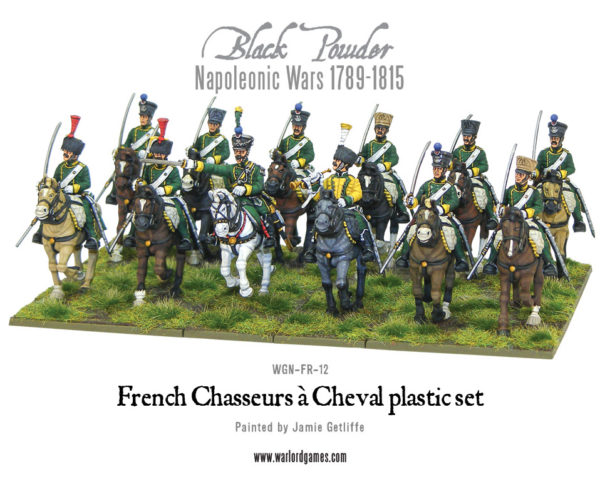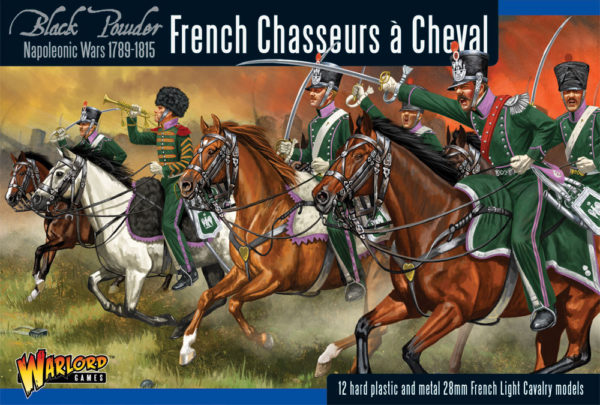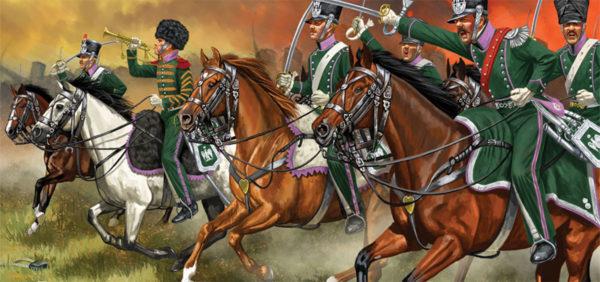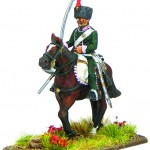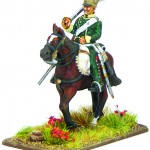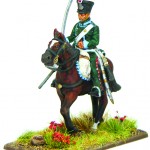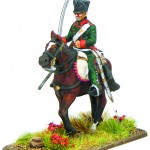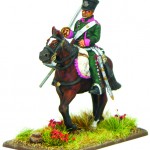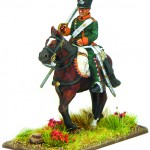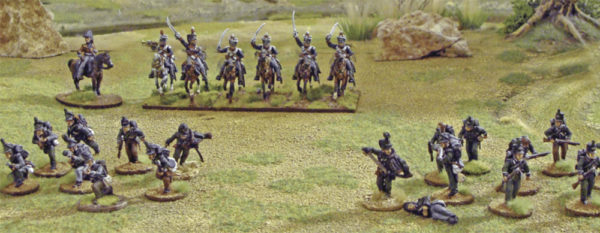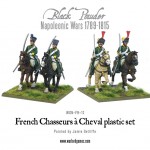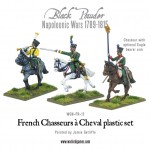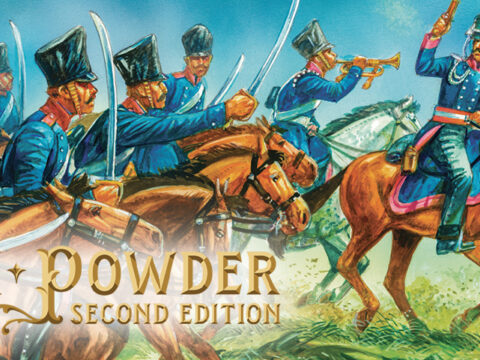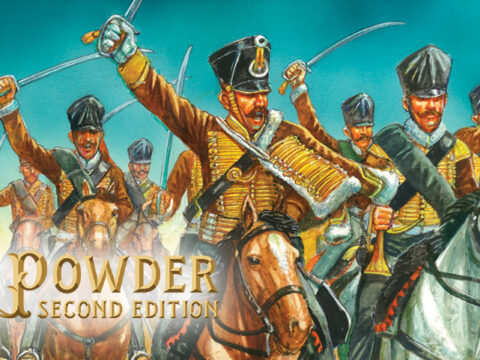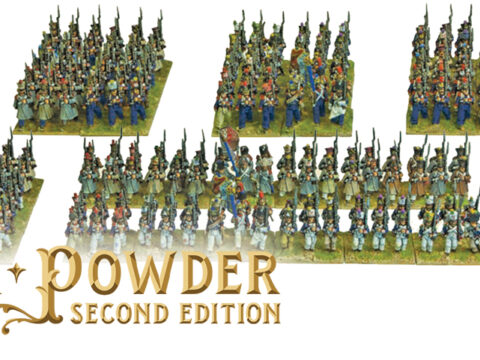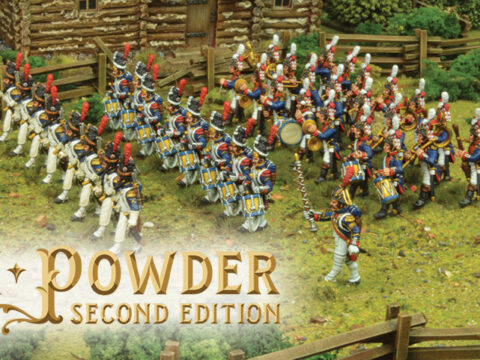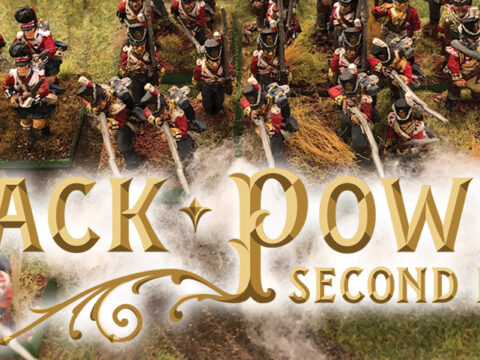We’ve taken a look back into our archives to bring you this fantastic article on the Chasseurs a Cheval from David Matthews of the Matlock Wargames Club!
The role of light cavalry involved reconnaissance and the screening of the main army. This included the posting of pickets in bivouac, providing intelligence and observation of the opposing force, preventing enemy reconnaissance in an effective and efficient manner, plus foraging, escort duties, raiding and pursuit. They were also more than capable of charging knee to knee when required as they proved time and time again on the battlefields of Europe and Russia, together with the hussar regiments, with whom they were often brigaded. The more numerous chasseur regiments excelled at this function.
The chasseurs were also capable of dismounted action, like the dragoons. Napoleon’s escort was formed of seasoned veterans selected from all the chasseur regiments.
Several of Napoleon’s generals and even marshalls began their career or were colonels in the chasseurs -Giraud, Grouchy, Murat, Offenstein, Paultre de Lamotte, Quinette de Cernay, Scheglinsky, díUrre, and Watier Saint-Alphonse. One of the most famous was Louis-Pierre Montbrun.
“I considered our (British) cavalry so inferior to the French from the want of order, that although I considered one squadron a match for two French, I didn’t like to see four British opposed to four French: and as the numbers increased and order, of course, became more necessary I was the more unwilling to risk our men without having a superiority in numbers.” – Sir Arthur Wellesley, Duke of Wellington 1818
Organisation
In 1804 there were 24 regiments and in 1811 as many as 31 regiments. By the time of Waterloo in 1815 (which we shall concentrate on) there were 16 regiments.
More easily trained and more importantly cheaper than hussars, they were the most prevalent of Napoleon’s light cavalry arm.
At Waterloo there were (excluding the guard Chasseurs a Cheval ), the 1st, 3rd, 6th with Ney’s corps in the left wing of the army, the 4th, 9th, 11th and 12th with Napoleon on the right wing (also fighting at Ligny).
During the great battle, the 1st and 6th, having been battered at Quatre Bras, supported the infantry at Hougoumont, the 3rd, with Duruttes Division, conducted the fighting withdrawal with distinction late afternoon in the face of the Prussian advance. The remaining regiments, held in reserve, were sent in late afternoon to face the Prussians at Plancenoit.
Regimental Organisation consisted of 4 squadrons, each of two companies, the 1st squadron having one company of elite troopers, and a regular company. There were also two non-combatant depot squadrons.
- 1st squadron: 1st (elite) and 5th companies
- 2nd squadron: 2nd and 6th companies
- 3rd squadron: 3rd and 7th companies
- 4th squadron: 4th and 8th companies
Sometimes the elite company was detached from the regiment and served as an escort to a Marshal. If there were several regiments, the Marshal took only 15 men from every elite company. Occasionally whole regiments were seconded for this purpose.
Uniforms and Equipment
Each individual regiment had a distinctive facing colour, the colours of the facings of the Chasseurs never changed throughout the Napoleonic wars.
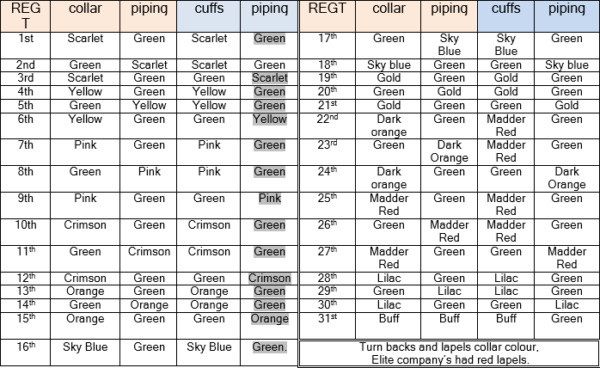
Taken from Oliver and Partridge, Napoleonic handbook
Sample Chasseur facing colours, painted by Tim Harris
The 1st Company in every regiment was named Elite Company and they rode on black horses. They wore red plumes and epaulettes and had flaming grenade insignia on the coat-tails and saddlecloth.
In February 1812 the elite companies of French Hussar and Chasseur regiments were ordered to adopt shakos with red chevrons and upper/lower bands. Many Chasseurs regiments continued with their colpacks until 1815. The officers, in particular, were resistant to this change. As such the new Warlord Games Chasseurs have the option of using either headdress.
In 1809 at Sacile, the French 8th Chasseurs a Cheval was full of swaggering men who had bragged about their exploits. They wore their full dress uniform (parade uniform) so as to stand out during the battle. Unfortunately, they were routed by Austrian hussars and fled toward the river. It amused the poorly dressed French infantrymen. Other cavalry regiments charged to drive off the pursuing Austrians.
Horses and Equipment
“The French cavalry was, on the whole, poorly mounted and poorly equipped; its men were awkward horsemen. Yet it outclassed its opponents simply because, when order rang out and trumpets clarioned ‘Charge!’ it put in its spurs and charged all out, charged home!” Archduke Charles commander-in-chief of the Austrian army
The dolman (plus sash and sabretache) were worn by chasseurs mainly for parade and only seven regiments wore them for field service. The sabretache was a leather case for papers, reports, small items etc. and was suspended by straps from the belt at the left side.
During a campaign, the ornamented sabretaches were covered by plain black oilcloth. During campaigns in 1813, 1814 and 1815 the sabretaches became a rare sight, and the few still existing were less colourful than those in 1804-1808.
Before the campaign, the white sheepskin, trimmed in the regiment’s facing colour (or silver for officers, and green edging with black fur to complement the Grey/White horses for musicians), were issued to every chasseur. The sheepskins for light cavalry were bigger than for the heavies. They were used by French, Polish and Austrian cavalry (but not by the Russians and Prussians) for comfort, especially during long marches.
The sheepskins were very comfortable in winter. The problems with them were in summer, they were hot to ride on and in rain, they “soaked like sponges”. To make things worse, a lot of humidity and water made the sheepskins badly rot.
The saddle cloth for officers and rank and file was green, edged in the facing colour, and again silver for officers with a silver regimental number in the corner rear. Occasionally there would be a leopard skin for the wealthier officers.
All bridles and metal horse furniture for all ranks would have been silver plated.
Cross belts were white buff leather, occasionally officers would have black, and all buckles and metal work were copper. The exception to this being the 5th and 27th chasseurs that for reasons lost in time wore yellow webbing and belts. Only the musketoon clip was of silver metal.
Horses
During every campaign, there was always a shortage of good cavalry horses. In 1805 between Ulm and Austerlitz the French lacked so many horses that the Emperor sent officers to buy horses “of whatever breed” and colour for the cavalrymen.
“Without a drop of water to drink and only an occasional nibble of wayside grasses, they arrive at the first bivouacs utterly spent, collapse, and have to be shot by their riders, who, adding horsemeat to a soup of uncut rye, promptly go down with diarrhoea, an affliction not conducive to brilliant exploits on horseback.” Britten-Austin – 1812 The March on Moscow
This article was written by David Matthews
Add these flamboyant light cavalrymen to your French army today!
